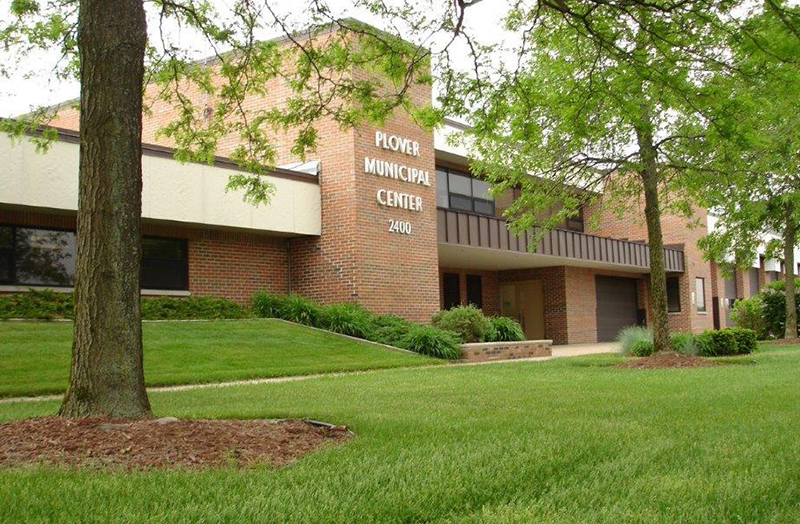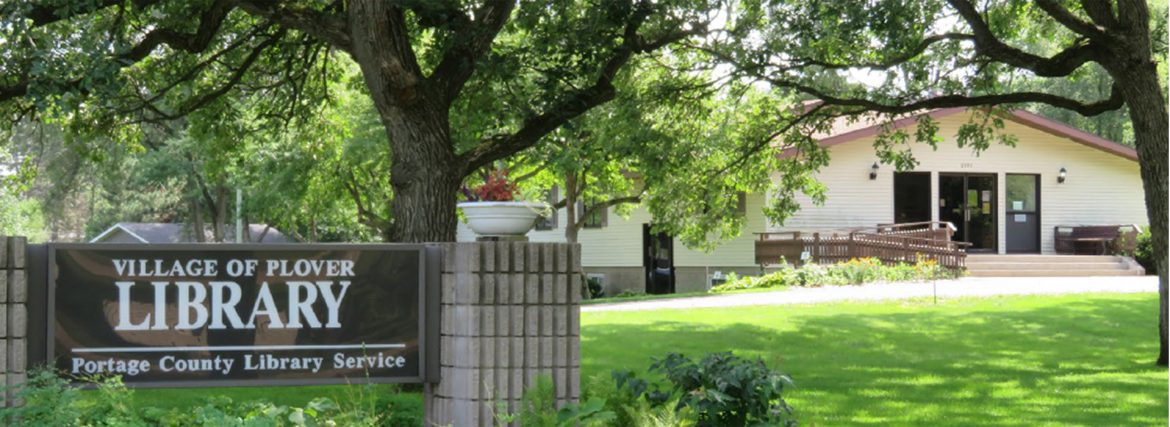Village of Plover, Wisconsin
A solid year
Business View Magazine interviews Dan Mahoney, Village Administrator of Plover, WI, as part of our focus on best practices of American towns and cities.
Plover is a village in Portage County, Wisconsin, in the central part of the state. The area was originally established by treaty in 1825, as a boundary point between the Chippewa and Winnebago tribes of Native Americans as a “Plover Portage of the Ouisconsin.” The Village was dissolved in 1868, incorporated again in 1912, dissolved once more in 1931, and re-incorporated, once again, in 1971. Today, the Village of Plover has about 13,200 residents.
According to Village Administrator, Dan Mahoney, Plover’s growth over the last 50 years can be attributed to its ability to establish partnerships with various organizations, including municipal jurisdictions, businesses, and non-profit groups. “We learned that lesson a long time ago; way back in the 1980s, when the Village established a relationship with the Plover-Whiting Youth Athletic organization,” Mahoney recounts.” It seems that the organization approached the Village with the idea of undertaking the necessary fundraising to construct baseball and softball facilities, as well as running its leagues, as long as Plover would maintain the facilities, going forward. “That’s something that has worked out well for us,” he says. “So, the Village has used that as a guideline as we look to establish other partnerships, and we’ve been very successful with those efforts.”
 That dynamic of creating mutually successful partnerships extends to the larger community just north of Plover – Stevens Point. “It’s about twice as large as the Village, but they have a great mixture of businesses that matches what we do. So, we feed each other from an economic development standpoint, which works extremely well.” One particular project that the Village recently “inherited” is the Sentry Curling Center. “The club, itself, is actually called the Stevens Point Curling Club,” Mahoney remarks. “They only had two sheets of ice and wanted to be able to expand their usage with a new facility with four sheets of ice. That would allow them to have more bonspeils (tournaments) and bring additional people in. We felt that facility was so important to the community that the Village offered the land for it at no cost.”
That dynamic of creating mutually successful partnerships extends to the larger community just north of Plover – Stevens Point. “It’s about twice as large as the Village, but they have a great mixture of businesses that matches what we do. So, we feed each other from an economic development standpoint, which works extremely well.” One particular project that the Village recently “inherited” is the Sentry Curling Center. “The club, itself, is actually called the Stevens Point Curling Club,” Mahoney remarks. “They only had two sheets of ice and wanted to be able to expand their usage with a new facility with four sheets of ice. That would allow them to have more bonspeils (tournaments) and bring additional people in. We felt that facility was so important to the community that the Village offered the land for it at no cost.”
With a $1.5 million pledge from the Sentry Insurance Foundation, the Stevens Point Curling Club broke ground for its new facility this past spring and, if the COVID-19 pandemic doesn’t prevent its grand opening this October, the new Sentry Curling Center will be open for business. “It turned out to be a great location for them because it’s adjacent to our local interstate, I-39, and a development called Village Park at Plover, a small retail center with eating and drinking establishments, and hotels, as well. The Curling Club looks forward to growing their membership and adding more tournaments and opportunities for people to get more involved in curling. That’s something that’s very exciting to the people of the Village of Plover.”
Another partnership was formed between the Village and the Wisconsin Potato and Vegetable Growers Association. “They have created an organization called Farming for the Future,” Mahoney shares. “That organization is looking at building a new facility and they have chosen Plover. The focus is to create an educational facility and museum that is designed to help people understand and appreciate where their food comes from and the people who grow it.” Construction on the $7-10 million facility is slated to start in 2021, with completion in 2022. “That facility will bring people from Portage County and the State of Wisconsin,” Mahoney proffers, “but it’s anticipated that it will also draw visitors from Michigan, Illinois, Minnesota, and Iowa, as well.”
Another ongoing project in Plover is the Lake Pacawa Park Renovation Project near the Village’s southern boundary. “A couple of years back, the Village built a bandshell that is now available to the public and for other entertainment events,” Mahoney says. “That was the first phase of the development. Now, we’re moving into the second phase with construction starting in 2021. The project involves several items at a total cost of a little over $4 million. And again, we’re using partnerships: the Village will pay for the public infrastructure portion of the project, some of the pathways, some of the sewer and water extensions, and the parking. We have applied for Wisconsin Department of Natural Resources funding, and we’ll fundraise with the public to offset the remaining costs. The project includes a pedestrian path that will encircle all of Lake Pacawa and make connections to the Village Park at Plover project, as well as to the Green Circle Trail, which is a 30-mile pedestrian and bicycle trail that encompasses the Stevens Point/Plover urban area.”
Another construction project planned for the Park is an accessible splash pad and playground area. “We wanted something that was a little bit different but, more importantly, something that would be available to all the members of our community,” Mahoney states. “So, not only will this facility be available to young people and their families to enjoy, but to those who have other life challenges. These facilities will be geared towards them, as well. We know it’s going to be a regional draw because of its uniqueness. In addition, there will be three fishing piers constructed; one of them will include a kayak launch area that is also accessible. Finally, we will be building a shelter with restrooms for the Lions Club, as part of the design. The shelter will be available for use by the public, as well.”
Regarding the Village’s attention to green initiatives, Mahoney explains, “Groundwater quality and groundwater quantity are very important issues here. In central Wisconsin, drinking water comes primarily from groundwater aquifers. There’s a very plentiful supply of water, however, the agriculture industry and municipalities use a lot of that water, so there’s been concern with respect to how those high-capacity well-users are using water and that they may be having a negative impact on the environment. Case in point: there’s a river that flows through the Village of Plover, the Little Plover River, with an enpoundment called Springville Pond. It’s a beautiful water resource, but at its eastern end, at the beginning of the river, in 2004-05, there were some small dry-ups in the stream, and environmentalists became concerned that the Village and the agriculture industry’s wells were drying up the river.
“So, the Village changed its pumping regimen; we have three municipal wells in the Village – two are within one-half mile of the river. We now pump 70 percent of the water from the third well, which is over two miles away, and 30 percent of the water, that is only one-half mile away, to minimize impacts to the river. The Village also acquired some listening equipment and has done a lot of leak detection. In this past year, we’ve found significant leaks in some of the water laterals. We’ve fixed those leaks, which has resulted in substantial reduction in the amount of water that the Village pumps from its wells, lowering pumping by 110 million gallons per year.”
 And, once again, the Village has worked with partners on other environmental issues. “The Del Monte Corporation has facilities in the Village, and they worked with us to acquire 160 acres of land,” Mahoney reports. “Del Monte took it out of agriculture production and now use it for taking their process water and cooling water and putting it back on the land. So, that became a positive aspect. We also started conversations with some of the conservation groups and with an engineering consulting firm that specializes in groundwater and natural resource issues. They asked us: ‘Did you ever consider looking, not just at the Little Plover River, but at the entire watershed? What does the water quantity and quality look like? Are there improvements that can be made to the stream? What about forest management? What about plants? What about the animals?’ Well, that was an ‘aha’ moment for the Village.
And, once again, the Village has worked with partners on other environmental issues. “The Del Monte Corporation has facilities in the Village, and they worked with us to acquire 160 acres of land,” Mahoney reports. “Del Monte took it out of agriculture production and now use it for taking their process water and cooling water and putting it back on the land. So, that became a positive aspect. We also started conversations with some of the conservation groups and with an engineering consulting firm that specializes in groundwater and natural resource issues. They asked us: ‘Did you ever consider looking, not just at the Little Plover River, but at the entire watershed? What does the water quantity and quality look like? Are there improvements that can be made to the stream? What about forest management? What about plants? What about the animals?’ Well, that was an ‘aha’ moment for the Village.
“So, we moved forward and established a partnership with the Wisconsin Wetland Association, the Wisconsin Wildlife Federation, the Wisconsin Potato and Vegetable Growers Association, the Wisconsin Department of Natural Resources (WDNR), MARS-EOR, (Montgomery Associates Resource Solutions – Emmons & Olivier Resources), and the Portage County Land Conservation Department. We formed a project management team with the goal of improving the flow of the Little Plover River, but also making improvements to the entire watershed, as a whole. Currently, we have $2.6 million worth of funding for five different projects, all geared towards improvements in the watershed.
“One is called the Soik Wetland Restoration Project. The Village acquired 60 acres of land with some funding assistance from the WDNR. That land is being taken out of irrigated agriculture production and being converted to wetlands and upland prairie. We have another project that’s occurring on WDNR property and Little Plover River Conservancy property. On that property, we’re re-establishing pine barrens and oak barrens. And we’re working with the University of Wisconsin at Stevens Point to reformulate the river through that section, which had widened out. Back in the 1800s, the Little Plover River was only five feet in width. In certain areas, it is now 30-40 feet in width. So, the University recommended doing some channel narrowing and planting some sedges and grasses to firm up the bank, so that the river will go back to its old channel form, which is very beneficial. It’s a Class One trout stream, so it helps the brook trout in that stream.
“We’ve also been working with the U.S. Department of Agriculture on a resource conservation project, where we work with local farmers and property owners on improvements that we can make to the land that address erosion, and water quantity and quality issues. And we’re finding that the public and the property owners are getting very excited about those projects once they learn about them. Now they are lining up and saying, ‘What can we do on our property? Can you help us out?’”
Regarding commercial development in Plover, Mahoney points to its partnership with Portage County: “We were always growing strongly from a single-family residential standpoint, but we had limited commercial and limited manufacturing. But, ultimately, between the Village and Portage County, we reached a threshold and that gave us the opportunity to do a couple of very important retail/commercial projects. The first is the Crossroads Commons development. That’s a 160-acre development that is primarily retail in nature. We have some national chains, including Kohl’s, Wal-Mart, and Lowes. And we have a significant number of other developments within that project. It’s been extremely successful, and it continues to evolve. A Jiffy Lube is the most recent project under construction. The current value of the development is about $80 million. We anticipate that when the project is built out, it will have a value of $100 million. It’s been a huge hit from a retail standpoint, not only in Portage County, but the folks from the national chains have been shocked and surprised that the reach of the development is many counties away. It’s become a super-regional attractor, and it’s lit up economic development in all of Portage County.
“Our second retail project is called Village Park in Plover. It’s a smaller development geared to unique retailers. We have a car dealership there, Mark Toyota of Plover, which is an anchor in that development. We have many interesting food and drinking establishments located there, as well. There’s a Hampton Inn there; there are craft shops, such as Beyond Ordinary and Antoinette’s Quilt Shop. O’so Brewing, a local beer manufacturer, is doing extremely well, and Great Northern Distilling offers great liquor products. So, Village Park at Plover has become a unique attractor and a destination for creative folks.”
“Another reason why we’re successful is because the Village has done a significant amount of planning with respect to its public utilities, especially sewer and water extensions,” Mahoney adds. “For example, the Village is basically ready to grow and has the capability of adding 3,200 acres for future development. We have sewer mains in place that are interceptors so they’re larger than normal, which means we can continue extending and growing, primarily to our east and south. Water mains are also in place. So, it becomes very easy when developers are looking to expand and one of the first questions they ask is, ‘Do you have sewer and water available?’ It certainly is available, and it will be available for decades to come.”
Finally, Mahoney shares that the Village is on track for a very good year in all types of development: “Through the month of August, we have issued construction permits that exceed $28.8 million,” he states. “Some of the projects include: a four-story apartment complex, a 120-unit apartment complex, and the Sentry Curling facility. In addition, two of our schools are undergoing renovations – Plover-Whiting Elementary and Roosevelt Elementary; a the Metro Market grocery store is completing store renovations; one of our local churches is constructing a pretty large addition; and one of our major developers, Lokre, is in the midst of an office renovation. In addition, we have 22 single-family residences under construction. So, that’s definitely a solid year of development for the Village of Plover through August, and we expect that the remainder of the year will bring additional developments to the Village.”
AT A GLANCE
Village of Plover, Wisconsin
WHAT: A village of 13,200
WHERE: In Portage County, in the central part of the state
WEBSITE: www.ploverwi.gov



